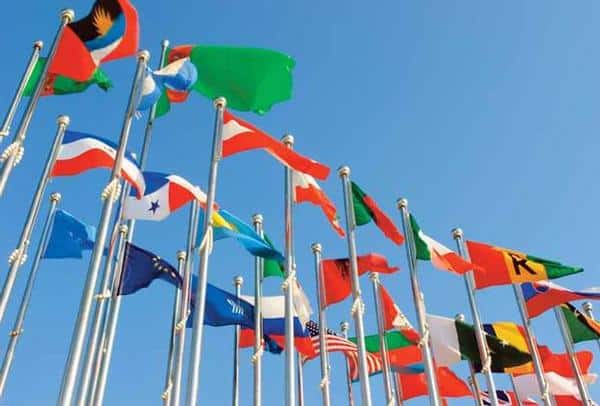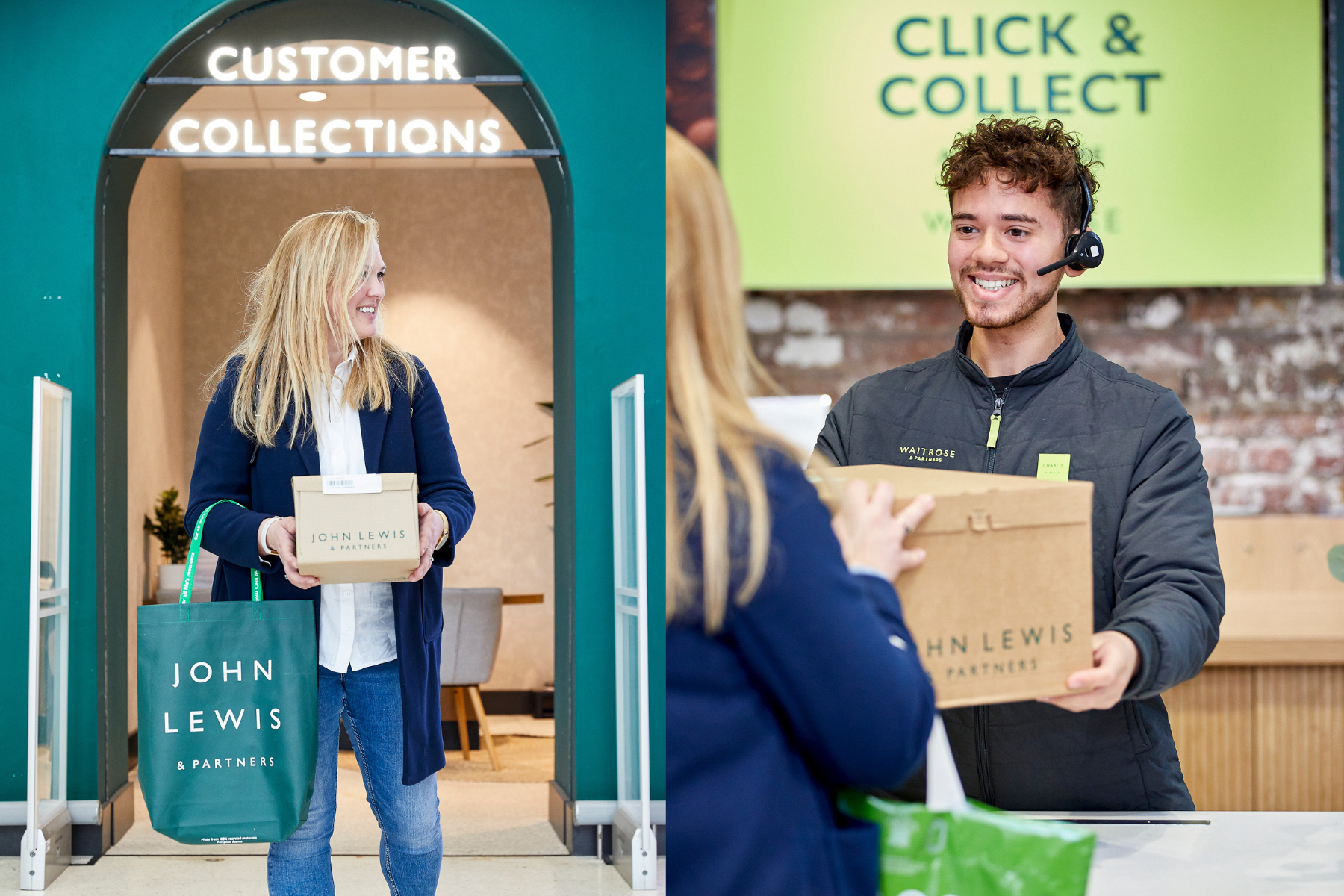Karina van den Oever, Senior Consultant at A.T. Kearney Limited, examines the emerging markets for UK e-retailers.
With retail growth expected to continue at the slow pace of 1.5% – 3% over the next 3 – 5 years in Europe, many retailers are looking to emerging markets to fuel growth. There are several ways to enter a new market, such as acquiring a local player, opening own stores when regulation allows, setting up a joint venture or franchise partnership, or selling wholesale to local retailers on a concession basis. But, what about selling direct via the online channel? This is a low cost, low risk alternative to establishing physical presence in new markets, including emerging markets.
Entering through the online market is a low risk way of testing a brand’s strength, obtaining shopper behaviour data to better understand consumer preferences, and building relationships with customers before setting up stores. It is also a low cost way to test the technological, financial and logistical infrastructure of a country through the reliability of online payments, shipping and delivery. Combined with social media, this is a low cost opportunity to begin a dialogue with consumers even before you set up shop.
To put this into perspective, American luxury retailer Neiman Marcus recently acquired partial ownership in a Chinese fashion website to test China’s market, learn about Chinese consumers’ likes and dislikes, and capitalise on the country’s increasing demand for luxury goods. Neiman Marcus got all the information it needed without entering into expensive real estate contracts or trying to navigate the complexity of tier 2 and tier 3 cities. On a smaller scale, many UK retailers already ship products to other markets in which they don’t have a physical presence. Next, for instance ships to 61 countries worldwide, but has stores/ concessions in only 40 countries. On the other hand, Debenhams has a presence in 24 countries, but now ships to 67 countries.
Whether you are entering via the ecommerce route or complementing your existing local footprint with an online offer, how do you know which emerging markets are ripe for ecommerce? Here at A.T. Kearney, we conduct an annual study, the GRDI – Global Retail Development Index. This study identifies the top 30 emerging markets that are prime for retail entry. Out of these 30 emerging markets, we have then ranked the countries based on their attractiveness for online retailing in our 2012 Ecommerce Index. We looked at metrics such as internet penetration, value and growth of online sales, as well as evaluated typical ecommerce challenges, such as technology, payment and logistics infrastructure, and internet security and digital commercial laws.
Our research this year found that the top 10 countries in the 2012 Ecommerce Index are as follows:
So, let’s take a look at the top 5 in detail and find out why they are the top performers.
1. China – With a $23bn online market and 78% CAGR growth rate since 2006, it is hardly surprising that China made it to the top of the list. Its online retail market is expected to explode, reaching $81bn over the next five years as the country’s infrastructure improves and online purchasing behaviours evolve. China has 513 million internet users, the largest online population in the world, and 164 million online shoppers who are drawn in by lower online prices, promotions, and free shipping, and who value peer reviews. Consumer electronics and apparel are the two most popular categories among China’s online shoppers, followed by beauty products. Infrastructure challenges continue to stall China’s ecommerce potential. The quality of China’s transportation infrastructure varies outside of its metropolitan hubs, inhibiting deliveries. In tier 1 and tier 2 cities, online retail purchases are typically delivered by couriers, or by high-end express services, such as FedEx, DHL and EMS. Payment solutions such as Alipay, 99Bill and PayPal, are the most popular form of online payments as credit and debit cards remain uncommon. Local Chinese retailers, including Taobao, Paipai, and 360Buy dominate the online market. In fact, 360Buy, coined the ‘Amazon.com of China’, actually owns 16% of the market. UK retailers are slowly making inroads too. Argos has a joint venture with Haier, where Haier’s existing franchise network of 6,000 stores would serve as delivery points for online orders. Burberry , who has a footprint of about 60 stores in China, has a website in the local language and local currency, while others, such as Net-a-Porter.com and House of Fraser offer shipping to China.
2. Brazil – With 80 million internet users who spend $10.6bn online per year, and are expected to spend $18.7bn by 2017, Brazil is coming in a close second. Brazil’s strong and growing middle class shop online to get better deals. Brazilian shoppers are price conscious, demand free shipping and interest-free payment terms. They also frequent group-buying sites such as Groupon. In 2011, 10 million Brazilians made more than 20 million transactions on groupbuying sites. Appliances and consumer electronics are the most common products sold online. Online apparel sales remain marginal, as fashion-savvy Brazilians still value the social experience of in-store shopping. Local Brazilian retailers already have an online foothold, with B2W (owned by Lojas Americanas department stores) possessing 20% of the online retail market. Some UK retailers, such as Marks & Spencer , Debenhams and House of Fraser, are trying to get a piece of the Brazilian market without opening stores, by offering shipping to Brazil, capitalising mainly on tourists who have come across their brands in the UK or other markets. Although Brazil’s ecommerce market is thriving, the country has particular issues with logistics and online payment security. To combat these, the Brazilian government has invested in air and shipping ports and is strengthening its digital commerce laws.
3. Russia – Russia has the largest online population in Europe (60 million users) and 15 million online shoppers. Russians also browse the web regularly from their mobile phones – there are 1.8 mobile phones per person in the country. These market dynamics translate into a $9bn online retail market, with growth projected to reach more than $16bn by 2016. Russians primarily buy with cash; this is because only one in five households has a credit card. The country’s poor financial and logistics infrastructure and consumers’ lack of confidence in delivery concentrates ecommerce sales in Moscow and St. Petersburg, where 70% of ecommerce sales are delivered, and a further 20% are in second tier cities. Both domestic and foreign retailers are investing in ecommerce operations to position for future growth. Leading Russian grocer, X5 Retail Group, recently launched an ecommerce site, while French retailer Auchan plans to establish collection points for online orders. Next , who already has 22 shops in Russia, has an ecommerce site in the local language, and guarantees free delivery in 6 – 8 days via Fedex. Monsoon has 21 stores/concessions and Accessorize , 86 stores/concessions in Russia and an ecommerce website in the local language and local currency.
4. Chile – Advanced technology and telecommunications infrastructure and an active base of online buyers have propelled Chile to a 27% ecommerce growth rate since 2006. Some 71% of Chilean internet users shop online, the highest among the 30 countries in the GRDI. However, because of the relatively small size of Chile’s online market—just $749m in sales compared to Brazil’s $10.6bn – it is easily overlooked. Chile’s internet users are not afraid to purchase online. The average Chilean household has four credit cards and spends $158 per year online, compared to $44 in the rest of Latin America. Over the next five years, Chile’s online retail market is expected to double to $1.5bn as more people shop online. Chile’s domestic retailers control the market, but international players are gaining traction. Next, House of Fraser and Debenhams ship to Chile without having a physical presence. Domestic retailer, Falabella, is trying to stay one-step ahead of the competition through heavy investment in the online buying experience – a ground-up ecommerce logistics network, intelligent routing systems, online order tracking and a strong reverse logistics system for returns.
5. Mexico – Mexico is Latin America’s second largest online retail market (after Brazil) with $1.2bn in sales per year, and the fastest-growing internet penetration rate in the world. As more Mexicans obtain internet access, online sales are projected to nearly triple to $4.4bn by 2016. Despite its potential, a poor technological infrastructure hinders Mexico. The internet penetration rate is 31%, with users primarily connecting at slow speeds to avoid paying for faster but higher-priced broadband connections. Still, Mexico offers some of the most unique ecommerce innovations, such as the BanWire system, which allows customers to purchase a product online, print a voucher and pay for the product in person at a nearby convenience store. International retailers are seeking to capitalise on Mexico’s potential. Wal-Mart’s Superama chain allows customers to order products online and either pick them up (no charge) in the store two hours later or pay for home delivery within the hour. Topshop and Next offer international shipping to Mexico from their main websites while French Connection has a multichannel offer in Mexico.
ONLINE SUCCESS FACTORS
Ultimately, and as demonstrated with the above markets, success in online retail often requires patience, persistence, and an ability to adapt to local markets. Notably, and for the interests of this piece, we believe that there are four main success factors for entering new markets either online or as part of a multichannel strategy. These consist of:
- Develop a customised value proposition. As in bricks-and-mortar retail, ecommerce requires adaptation to local markets. A one-size-fits-all approach will not work because online consumers in different countries exhibit unique behaviours and make internet purchases for different reasons. Success requires adjusting websites, payment methods, shipping options, and business models according to the needs of each market.
- Manage the customer experience. The convenience of ordering products at the click of a button and having them delivered to your home is a main benefit of online shopping. Thus, managing the customer experience from online browsing and product purchase to delivery and return is critical. In markets where logistics are a challenge, constant communications with customers about shipping timelines can help manage expectations and build trust.
- Do not underestimate local players. Domestic companies dominate online retail in developing markets because they understand local consumer preferences and the ecommerce challenges and have well-honed online retail skills developed in their home countries. Even as foreign retailers enter, these local firms will continue to be formidable competitors.
- Have a long-term focus. Launching ecommerce operations in developing markets demands patience. It takes time to navigate a market, learn about online consumers, and build a reputable online brand.
Certainly the race to expand online retail in developing markets has already begun for both international and homegrown retailers. Ecommerce and multichannel integration in emerging markets offer tremendous opportunities at potentially lower risk and investment than building bricks-and-mortar stores. The best path to online retail success is the one that creates an immediate impact in developing markets and builds a growing, long-term advantage.






